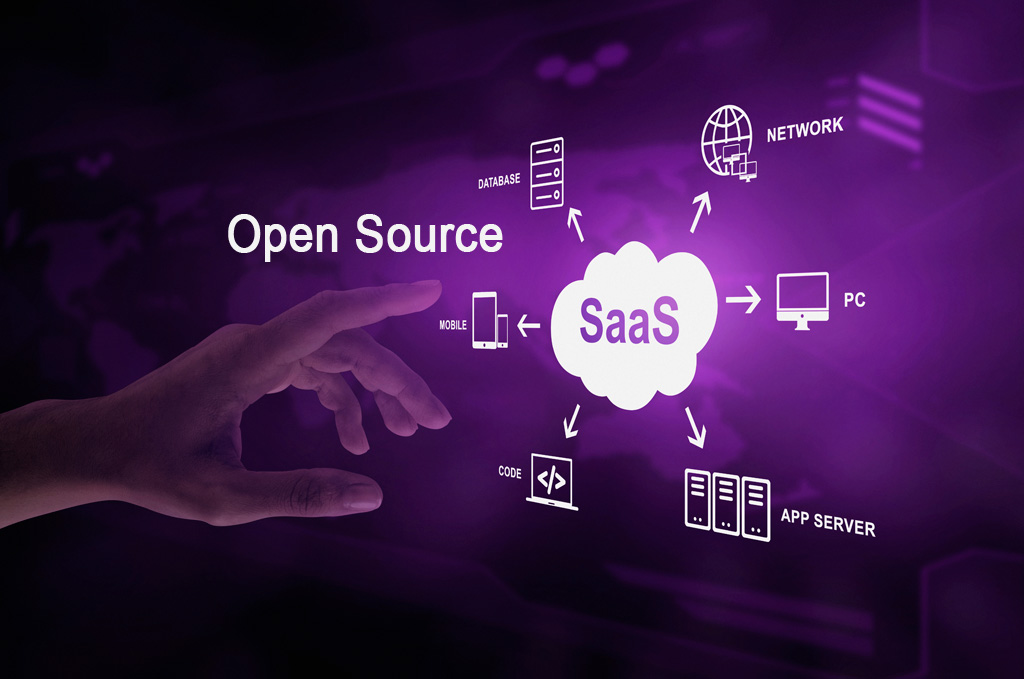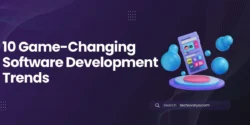In the rapidly evolving landscape of software development, open source software has become a cornerstone for building Software as a Service (SaaS) applications. Open source code and plugins offer numerous benefits, including cost savings, flexibility, and access to a vast community of developers who contribute to and maintain these resources. However, the use of open source components in SaaS applications comes with significant legal and compliance responsibilities, primarily due to the variety of open source licenses that govern their use, modification, and distribution. Understanding these licenses is crucial for SaaS developers and businesses to ensure legal compliance, protect intellectual property, and avoid potential legal risks.
Open source licenses are legally binding agreements that dictate how software can be used, modified, and distributed. They are broadly categorized into permissive and copyleft licenses, each with different implications for SaaS applications. Permissive licenses, such as MIT and Apache 2.0, are generally more flexible and allow for commercial use without requiring the entire application to be open-sourced. Copyleft licenses, like GPL and AGPL, impose stricter conditions, often requiring that modifications or derivative works be shared under the same license. For SaaS applications, where software is typically hosted on servers and accessed remotely, the concept of “distribution” becomes critical, as it triggers many license obligations. This article provides a detailed guide to navigating these complexities, ensuring that SaaS developers can leverage open source software effectively while minimizing legal risks.
Types of Open Source Licenses
Open source licenses are broadly categorized into two main types: permissive and copyleft, each with distinct characteristics that impact their suitability for SaaS applications.
Permissive Licenses
Permissive licenses impose minimal restrictions, allowing developers to use, modify, and distribute the software in both open source and proprietary projects. The primary requirement is typically to include the original license and copyright notice in any redistribution. Common permissive licenses include:
- MIT License: Found in 92% of audited open source projects, it allows almost unrestricted use, modification, and distribution, making it highly suitable for commercial SaaS applications.
- Apache License 2.0: Similar to MIT but includes patent grants and trademark usage clauses, offering additional legal protections.
- BSD Licenses (2-Clause and 3-Clause): These are simple and permissive, requiring only attribution.
- ISC License: A streamlined version of the BSD license, equally permissive.
Copyleft Licenses
Copyleft licenses require that any derivative works or modifications be distributed under the same license, ensuring the software remains open source. This can pose challenges for proprietary SaaS applications. Key copyleft licenses include:
- GNU General Public License (GPL): Versions 2.0 and 3.0 require that any software incorporating GPL code be released as open source if distributed, including all modifications and linked libraries.
- GNU Lesser General Public License (LGPL): Versions 2.1 and 3.0 are less restrictive, allowing proprietary software to link to LGPL libraries, but modifications to the library itself must be shared under LGPL.
- GNU Affero General Public License (AGPL): Version 3.0 extends GPL requirements to networked use, requiring source code availability for modified software accessed over a network, such as in SaaS.
Open Source Licenses in the Context of SaaS
The SaaS model, where software is hosted on servers and accessed remotely, complicates the concept of “distribution,” a key trigger for many open source license obligations. Understanding how licenses apply in this context is critical.
The Concept of Distribution
Most open source licenses’ obligations are triggered by distribution, which traditionally means transferring a copy of the software to another party. In SaaS, server-side code is not distributed, as users only interact with the application remotely. However, client-side code (e.g., JavaScript, HTML, CSS) sent to a user’s browser is considered distributed, triggering license obligations for those components.
The GPL SaaS Loophole
The GPL (v2 and v3) requires that modified source code be shared only when the software is distributed. Since SaaS typically involves no distribution of server-side code, there is a “SaaS loophole” that allows SaaS providers to use GPL-licensed code without sharing their modifications. However, this loophole is controversial, particularly for client-side code, which is distributed to users’ browsers and may trigger GPL obligations. Legal interpretations vary, and some argue that even server-side use could be challenged, making GPL a risky choice for SaaS.
AGPL and SaaS
The AGPL was designed to close the GPL SaaS loophole. Section 13 of the AGPL v3 mandates that if modified AGPL-licensed software is used in a networked environment (e.g., SaaS), the source code must be made available to users at no charge, typically via a network server. This makes AGPL particularly restrictive for proprietary SaaS applications, as it effectively requires open-sourcing modifications.
Permissive Licenses in SaaS
Permissive licenses like MIT, Apache 2.0, and BSD are ideal for SaaS because they do not impose copyleft requirements. Developers can use these licenses in proprietary SaaS applications without sharing their source code, provided they include the required license notices. These licenses are low-risk and widely used, with MIT appearing in 97% of commercial software audited.
Which Open Source Licenses Can Be Used for SaaS
The following licenses are generally suitable for SaaS applications, with varying degrees of caution:
- MIT License: Highly permissive, requiring only attribution. It is the most common choice for SaaS due to its simplicity and flexibility.
- Apache License 2.0: Offers similar flexibility to MIT with added patent protections, making it a robust choice for commercial SaaS.
- BSD Licenses (2-Clause and 3-Clause): Permissive and straightforward, suitable for SaaS with minimal compliance requirements.
- ISC License: A lightweight, permissive option similar to BSD, ideal for SaaS.
- LGPL: Can be used for libraries in SaaS, as it allows linking with proprietary code without requiring the entire application to be open sourced. However, modifications to the LGPL library itself must be shared under LGPL, which is less likely in server-side SaaS use.
- AGPL: Usable but requires caution. If you modify AGPL code and use it in a networked SaaS application, you must make the modified source code available to users, which may conflict with proprietary goals.
Licenses to Avoid or Use with Caution
Certain licenses pose significant risks for SaaS applications due to their copyleft nature or specific requirements:
- GPL (v2, v3): These licenses are high-risk for SaaS, particularly for client-side code. If any part of the application is distributed (e.g., JavaScript), the entire application may need to be released under GPL, including source code and rights to modify and distribute. The SaaS loophole may apply to server-side code, but legal uncertainty makes GPL a risky choice.
- AGPL: Should be avoided unless you are prepared to share your modified source code with users. Its network use clause makes it particularly restrictive for SaaS, as it applies even to server-side code accessed remotely.
- Other Copyleft Licenses: Licenses like the Mozilla Public License (MPL) or Server Side Public License (SSPL) have specific requirements that may complicate SaaS use. For example, SSPL, used by MongoDB, has restrictive terms that may require sharing additional system code, making it less suitable for proprietary SaaS.
License Risk Table
The following table summarizes the risk levels of common open source licenses for SaaS applications, based on the 2025 OSSRA report :
| Rank | License | Risk Level | OSI Approved | Suitability for SaaS |
|---|---|---|---|---|
| 1 | MIT License | Low | Yes | Highly suitable |
| 2 | Apache License 2.0 | Low | Yes | Highly suitable |
| 3 | BSD 3-Clause | Low | Yes | Highly suitable |
| 4 | BSD 2-Clause | Low | Yes | Highly suitable |
| 5 | ISC License | Low | Yes | Highly suitable |
| 7 | GNU LGPL v2.1 or Later | High | Yes | Use with caution |
| 17 | GNU LGPL v3.0 or Later | High | Yes | Use with caution |
| 18 | GNU GPL v2.0 or Later | High | Yes | Avoid or use with extreme caution |
| 19 | GNU AGPL v3.0 | High | Yes | Avoid unless open sourcing is acceptable |
Legal Aspects and Compliance
Legal Framework
Open source licenses are governed by copyright and contract law. They are legally binding agreements that dictate how software can be used, modified, and distributed. Non-compliance can result in legal action, including lawsuits, damages, or injunctions, as well as loss of intellectual property or reputational harm. For SaaS, the legal landscape is complex due to the ambiguity around distribution, particularly for client-side code.
The GPL SaaS Loophole Controversy
The GPL’s SaaS loophole arises because its obligations are triggered by distribution, not use. Since server-side SaaS code is not distributed, GPL requirements may not apply. However, client-side code (e.g., JavaScript) sent to browsers is considered distributed, potentially triggering GPL’s requirement to release the entire application’s source code under GPL. This interpretation is debated, and some legal experts argue that even server-side use could be challenged, making GPL a risky choice for proprietary SaaS.
AGPL’s Network Clause
The AGPL explicitly addresses SaaS by requiring that modified source code be made available to users interacting with the software over a network. This makes AGPL compliance mandatory for SaaS applications using AGPL code, even for server-side components. Non-compliance could lead to legal challenges, particularly if users demand access to the source code .
Compliance with Third-Party Open Source Plugins
Using third-party open source plugins in SaaS applications requires strict adherence to their licenses. Key compliance steps include:
- Identify Licenses: Determine the license for each plugin or component, using tools like FOSSA or Snyk to scan for licenses.
- Provide Attribution: For permissive licenses, include the license text and copyright notice in your application, such as in a dashboard, documentation, or a
3rdpartylicenses.txtfile. - Comply with Copyleft Requirements: For GPL or AGPL plugins, ensure that if the plugin is distributed (e.g., client-side JavaScript), the source code is made available as required. For AGPL, this applies even to server-side code if modified.
- Avoid License Conflicts: Ensure that licenses are compatible with your SaaS model. For example, mixing GPL code with proprietary code can trigger obligations to open source the entire application.
- Use Software Composition Analysis (SCA) Tools: Tools like Black Duck SCA or Mend can track open source components, their licenses, and vulnerabilities, ensuring compliance and security.
- Document Usage: Maintain a detailed record of all open source components, their versions, and licenses to facilitate audits and compliance checks, especially during mergers and acquisitions (M&A).
Legal Risks
Non-compliance with open source licenses can lead to significant risks:
- Legal Action: Violating license terms can result in lawsuits, damages, or injunctions.
- Loss of Intellectual Property: Copyleft licenses like GPL or AGPL may require releasing proprietary code, undermining your business model.
- Security Vulnerabilities: Open source components can introduce vulnerabilities if not updated regularly. Over 4,000 new vulnerabilities were reported in open source last year, including those listed in the OWASP Top 10.
- Strategic Risks: Using high-risk licenses like GPL can limit future distribution options (e.g., on-premises versions) or complicate M&A, as buyers may require compliance audits.
Best Practices for SaaS Developers
To effectively and safely use open source code and plugins in SaaS applications, developers should follow these best practices:
- Choose Permissive Licenses: Opt for MIT, Apache 2.0, or BSD licenses to minimize compliance burdens and maintain proprietary control.
- Track and Document Components: Use SCA tools to catalog all open source components, their licenses, and versions. Maintain a
LICENSEfile or dashboard section for attribution. - Provide Clear Attribution: Include license notices for permissive licenses in a visible location, such as a “Third-Party Licenses” page in your SaaS dashboard.
- Monitor Security: Regularly update open source components to patch vulnerabilities, using tools like Dependabot or Snyk to track CVEs (Common Vulnerabilities and Exposures).
- Prepare for Distribution Scenarios: Even if your SaaS is currently server-side only, plan for potential distribution (e.g., on-premises versions or client-side code) by ensuring compliance with all licenses.
- Consult Legal Experts: Given the complexity and legal ambiguity around licenses like GPL and AGPL, seek advice from legal professionals to ensure compliance, especially for copyleft licenses.
- Educate Your Team: Train developers on open source license nuances, particularly for client-side code, to avoid unintentional violations.
Conclusion
Using open source code and plugins to build SaaS applications offers significant advantages, including reduced development costs and access to robust, community-supported tools. However, the choice of open source license can profoundly impact your SaaS business, particularly in terms of compliance and intellectual property. Permissive licenses like MIT and Apache 2.0 are generally safe and flexible, while copyleft licenses like GPL and AGPL require careful consideration due to their potential to mandate source code sharing. By understanding license terms, ensuring compliance with third-party plugins, and following best practices, SaaS developers can leverage open source software effectively while minimizing legal and operational risks. Consulting legal experts and using automated tools for license and security management are critical steps to ensure a compliant and secure SaaS application.







